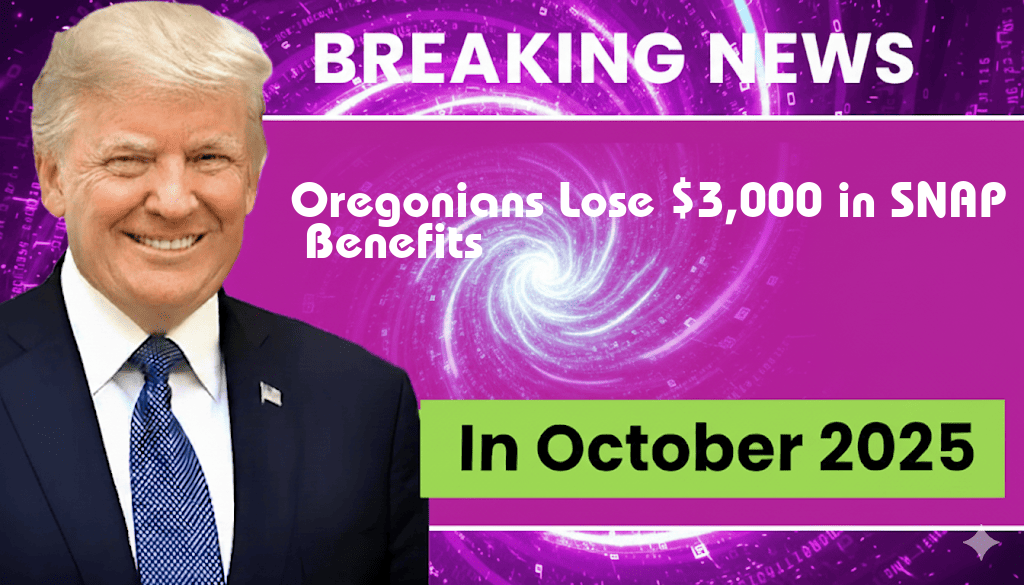

Oregonians Face Over $3,000 in Benefit Loss as 3,000 Lose SNAP Eligibility
Recent changes in the Supplemental Nutrition Assistance Program (SNAP) have left approximately 3,000 Oregonians without essential food benefits. As beneficiaries transition from pandemic-related provisions, many will see their monthly assistance cut by over $300, amounting to more than $3,000 in annual losses. This adjustment comes as the state grapples with rising food costs and economic uncertainty, leaving many families in challenging positions. Advocates are expressing concerns that these cuts will exacerbate food insecurity, especially among vulnerable populations already facing financial hardships.
Transitioning from Pandemic Benefits
The loss of SNAP eligibility for thousands stems from the expiration of emergency provisions put in place during the COVID-19 pandemic. Initially designed to support low-income families during unprecedented times, these additional benefits have been gradually rolled back as the economy stabilizes. However, many individuals and families are still struggling to recover from the pandemic’s lasting impact.
Understanding SNAP Changes
- SNAP Benefits Overview: SNAP, formerly known as food stamps, provides financial assistance for purchasing food to eligible low-income individuals and families.
- Emergency Allotments: During the pandemic, many states, including Oregon, provided emergency allotments, boosting monthly benefits significantly.
- Current Eligibility Requirements: As of this month, eligibility has tightened, and many who previously received the emergency benefits are now facing reductions.
Impact on Households
For many affected families, the loss of SNAP benefits means a critical reduction in their food budget. With the average monthly benefit dropping from around $600 to approximately $300, households are now forced to reassess their spending. According to local food banks, this sudden decrease in assistance is likely to lead to increased demand for food aid across the state.
Statistics on Food Insecurity
| Year | Food Insecurity Rate |
|---|---|
| 2019 | 10.7% |
| 2020 | 12.3% |
| 2021 | 11.5% |
| 2022 | 13.1% |
The increase in food insecurity rates highlights the urgency of addressing the needs of those affected by the SNAP cuts. Data from the Feeding America network shows that many families rely on these benefits to meet their nutritional needs, and losing them could have dire consequences for health and well-being.
Community Response and Resources
Nonprofit organizations and local food banks are stepping up to fill the gap left by reduced SNAP benefits. Community initiatives are being launched to provide food assistance and support to those in need. Some organizations are also advocating for policy changes to ensure that families can access sufficient resources.
Available Resources
- Local Food Banks: Organizations like the Oregon Food Bank are increasing their outreach efforts to support families impacted by SNAP cuts.
- Nutrition Assistance Programs: Programs such as Women, Infants, and Children (WIC) are available for eligible low-income families.
- Community Support Services: Various community organizations offer supplemental food programs and financial counseling.
For those affected, it is crucial to explore these resources and understand the options available. Residents can visit the Oregon Department of Human Services website for more information on eligibility and available programs.
Looking Ahead
As Oregonians navigate these changes, the state government and community organizations will need to collaborate closely to address the growing needs of food-insecure households. The recent SNAP eligibility adjustments serve as a stark reminder of the ongoing challenges many families face, underscoring the importance of continued advocacy for food security and economic stability in the region.
Frequently Asked Questions
What is the reason for the loss of SNAP eligibility for 3,000 Oregonians?
The loss of SNAP eligibility for 3,000 Oregonians is primarily due to changes in income and policy adjustments that have affected their ability to meet the program’s eligibility requirements.
How much in benefits are affected individuals losing?
Individuals who are losing their SNAP eligibility are facing an average loss of over $3,000 in benefits, which significantly impacts their ability to afford food and other essentials.
What is SNAP and who does it support?
SNAP, or the Supplemental Nutrition Assistance Program, is a federal assistance program designed to help low-income individuals and families afford nutritious food. It supports millions of Americans in need.
Are there alternatives for those losing SNAP benefits?
Yes, individuals losing SNAP benefits may explore other forms of assistance, such as food banks, local charities, and state programs aimed at providing food security and financial support.
How can affected individuals seek help or appeal their SNAP loss?
Affected individuals can seek help by contacting their local Department of Human Services office or by visiting the official SNAP website to learn about the appeal process and available resources.





